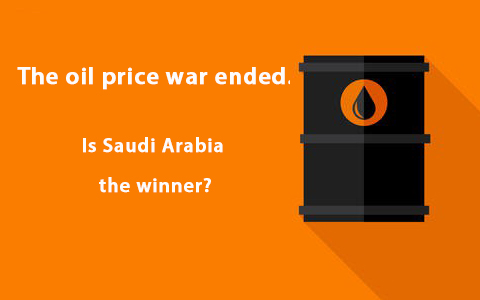
The oil price war ended. Is Saudi Arabia the winner?
Two months ago, an oil price war started worldwide. Now the smoke has begun to dissipate, the rebound in oil prices is more and more obvious. Whether it is OPEC + ‘s active production cut or the US’s passive production cut, the oil prices have risen sharply. The price war initiated by Saudi Arabia finally ended.
The export data in April also showed that the winner seemed to be Saudi Arabia. However, the soaring exports in ultra-low oil prices may not be good news. Will the oil prices continue to rise? Could the market share be maintained? Lots of problems remain.
Oil price rose more than 20% a week
A lot of good news last week fueled optimism in the market. The oil prices maintained a steady upward trend at the end of last week. WTI crude price futures for June delivery rose $1.19, or 5.05%, to $24.74 a barrel on Comex, ending the week up 25.08%. Brent crude price futures for July delivery rose $1.51, or 5.13 percent, to $30.97 a barrel in London, up 17.13 percent for the week.
This is also the second consecutive week that international oil prices have risen, and the cumulative increase of WTI crude oil futures in June has reached 46.04% in two weeks. Since May, crude oil has been optimistic. In 6 trading days from 1st to 8th, WTI crude oil futures prices closed at more than the US $ 20 per barrel for 5 trading days; On the -8th, there were 4 trading days with high prices above USD 31 per barrel.
On the 7th, the Saudi Arabian National Oil Company Saudi Aramco announced the price of crude oil exports in June. It can be seen that Saudi Aramco has greatly increased the oil price to Europe, and some varieties have even increased by more than 7.2 US dollars. It was interpreted by the market as that Saudi Arabia has released a signal to stop the oil price war, and it also implies that OPEC has actually begun to reduce production in order to achieve the goal of balancing the market.
Has the dark time passed?
On the one hand, oil is still in the low price. It is too early to make a conclusion. However, according to the OPEC + oil output cut agreement reached in mid-April, starting on May 1, countries will cut output by 9.7 million barrels per day within two months. On the one hand, with the improvement of the epidemic situation, various countries have gradually unblocked. Some parts of Europe resumed commercial operations in early May; in the United States, nearly 40 states have begun to restart economic production. After the various industries resume work, people’s demand will return. Trump also said on Twitter: “Demand is back and oil prices are rising very well.”
On the whole, it is mainly a rebound at this stage. But it will take a long time to recover to 40 dollars as before. It is estimated that it will still be 20-30 dollars in the near future. The essence of negative oil prices is that the crude oil produced has no space to store. Cutting output may improve the situation. but whether the rate of production cuts is enough and how the demand of major oil-consuming countries will be is still uncertain.



